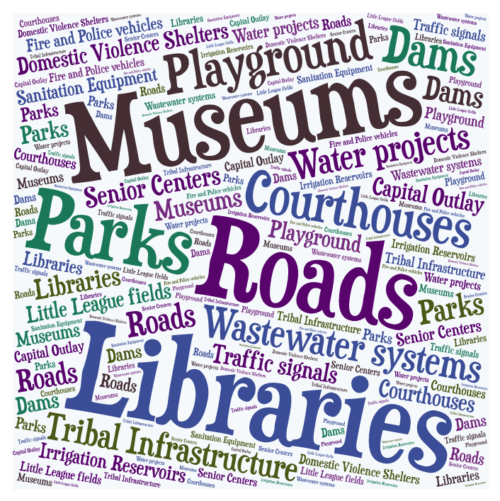The Senate passed a measure Wednesday that would enable New Mexicans for the first time to see how each lawmaker spends public infrastructure money under their control.

Should House members agree with Senate amendments, and Gov. Michelle Lujan Grisham sign it into law, the measure would require legislative staff to automatically publish a list 30 days after the session ends that details how individual lawmakers spend millions of dollars in most years — a far cry from the secrecy that has surrounded such decision making at the Roundhouse for as long as people can remember.
House Bill 55, sponsored by Rep. Matthew McQueen, D-Galisteo, and a bipartisan group of lawmakers, sailed through the Senate after some debate, a much different outcome than in previous years.
In 2015, New Mexico In Depth discovered that such information was a secret after filing a public information request for a list of individual lawmaker’s infrastructure spending allocations and finding out that information wasn’t subject to public scrutiny. That’s because of a long established statute that makes confidential any communication between individual lawmakers and legislative staff. That statute still stands, but now, if the measure becomes law, details about lawmakers’ individual spending choices will be exempt from the rule.
During the February House floor debate on the bill, McQueen said it’s important to make the information readily available to everyone who’s interested.
Sen. Jeff Steinborn, D-Las Cruces, said during Wednesday floor debate in the Senate that making the allocations public was long overdue and “fundamentally the right thing to do.” He listed three reasons: it’s public money that the public has the right to see; making it public prevents fraud; and transparency will result in money better spent.
Since 2016 when the first bills were introduced by McQueen and former senator Sander Rue, R-Albuquerque, the transparency measure has been hotly debated, with opposition largely hinging on the political costs to lawmakers if their spending decisions are known to the public. This concern has been voiced largely by rural lawmakers who represent multiple counties, who say they must juggle many more funding requests from their constituents than they can possibly fill.
But a 2019 investigation by New Mexico In Depth found the issue wasn’t a cut-and-dried example of a so-called rural/urban divide.
That year, we asked every lawmaker to give legislative staff permission to share their capital outlay allocations with the public. Just 15 lawmakers declined, allowing for the first time an almost complete picture of how individual lawmakers allocate money for brick and mortar projects around the state. Also included were the governor’s allocations, which will also be public in the future should the bill become law.
The 15 lawmakers who declined to provide their allocations were almost evenly split between multi-county lawmakers and single-county lawmakers, with the majority of the 15 representing urban constituents. That many rural lawmakers immediately made their spending public called into question the claim that greater transparency would hurt rural lawmakers the most. Some of the most passionate voices supporting the measure were rural lawmakers. Particularly notable was the House Republican caucus, whose lawmakers–many of them representing rural districts–proactively organized the release of their capital outlay. In 2019, House Minority Leader Jim Townsend, R-Artesia, said “It’s taxpayer money. I would not be able to defend why it should not be public. My goodness, it’s taxpayer money. I don’t know how else to say it.”
But during Wednesday’s Senate debate, a handful of rural lawmakers voiced concerns about the legislation, even though the bill passed without a dissenting vote. Lawmakers took pains to describe how they allocate funds through a regional decision-making process that Sen. Gay Kernan, R-Hobbs, said was infused with a “collaborative spirit.” The trepidation expressed by the lawmakers, even those who said transparency was the right thing to do, stemmed from a fear that their capital outlay decisions would be wielded against them politically come election season.
Rue, the former senator who championed the measure during his final years in the Senate, would often answer that concern by saying, regardless of politics, he ought to be able to answer to his constituents for how he spends their money.